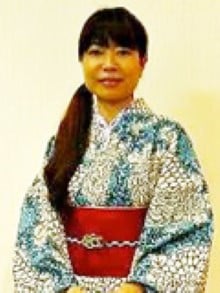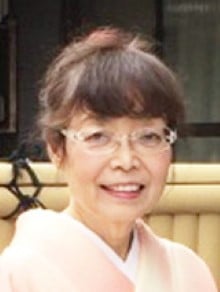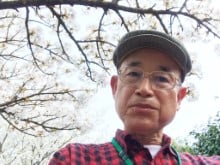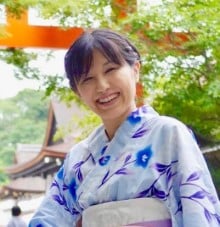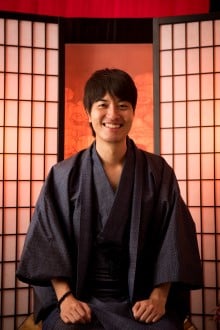Frequently Asked Questions by Foreigners
Q1. Why is tipping unnecessary in Japan?
A: There are mainly two reasons for the custom of no tipping. One reason is that tips are included in the charges for the services that customers have to pay. Workers at restaurants and hotels take it for granted that they offer good service to their customers, regardless of tipping. The other reason is that tipping is believed to negatively affect harmonious relationships among workers by stimulating undesirable competition in the group-oriented Japanese society.
Q2. Why do Japanese people slurp when they eat noodles?
A: There is a certain style to follow when you eat noodles. Unlike in Western countries, it is acceptable to slurp noodles in Japan for two reasons. First, Japanese people believe that slurping will enhance the taste of noodles and stimulate their appetite. Therefore, Japanese enjoy delicious noodles more by slurping them. Second, since it is best to eat noodles while they are hot, you need to cool them down by slurping before they go down your throat.
Q3. Why is it bad manners for Japanese to eat while walking in the street?
A: Table manners in Japan dictate that one is to sit and eat food served on a dish with chopsticks at the table. Unlike Western food such as hot dogs and sandwiches, Japanese food is generally unsuitable for eating during walking, as it is a standard practice to use a pair of chopsticks when you eat Japanese dishes. However, under the Western influence, a growing number of Japanese, especially young people, have been eating ice creams and crepes while walking on the street.
Q4. Why has “kawaii culture” started to become popular and developed in Japan?
A: There are mainly two reasons why “kawaii” or “cute” culture has become popular in Japan. Firstly, Japanese people traditionally value something immature or ephemeral. This mentality has made the Japanese regard imperfection as “kawaii,” or charming, which is not found in other countries, especially Western countries. Secondly, female immaturity is often favored by Japanese men who accept the quality as a sign of dependence on men. They are generally attracted to immature-looking young girls such as AKBs.
Q5. Why are so many announcements repeatedly made in Japanese trains and stations?
A: There are mainly two reasons for repeated loud announcements in stations. Firstly, train stations try to offer good service to passengers. They offer information about the time and track of trains’ arrival and departure as part of their customer service so that people won’t miss their trains or get injured. Secondly, train stations have a sense of obligation for announcement of delays in train service. This is because Japanese people take regular service of public transportation for granted.
Q6. Why do Japanese love take a bath so much?
A: There are two reasons for Japanese love of bathing. Firstly, Japanese people like to refresh and warm up themselves by bathing especially in chilly winter. Despite recent popularity of showers for their convenience and space economy, many still prefer to take a bath for its great physical benefits except in summer. Secondly, most Japanese people like to relieve the strains and stresses of society through a relaxing soak in a bath. Due to stressful work environments in the competitive business world, bathing plays an important role in relaxing their mind.
Q7. Why were high-tech toilets created in Japan?
A: There are two contributing factors in the development of high-tech toilets in Japan. First, Japanese people are superhygiene-conscious. This obsession with hygiene, which originates from Shintoism that emphasizes cleanliness and purity, stimulated their interest in the development of those products. Secondly, tap water in Japan is only soft water. Unlike hard water that tends to clog and block high-tech toilets, soft water is suitable for the use of high-tech toilets.
Q8. Why have 100 yen shops succeeded in Japan?
A: There are two reasons for their success in business in Japan. Firstly, under the prolonged economic stagnation since the 1990’s, budget-minded people have frequented 100 yen shops that sell a wide range of products only for 100 yen. Secondly, they can make a profit through bulk purchase and mass sales, efficient distribution channels, and the business strategy of making cheap and expensive products balance out each other in profit margins.
Q9. Why are there so many vending machines on the street in Japan?
A: There are several reasons for this phenomenon. The major reason is public safety in Japan. Vending machines on the streets are rarely vandalized in Japan, which promotes the installation of vending machines in public space. Another reason is that major beverage companies encourage land owners to place vending machines in their dead space to make extra money. With beverage companies taking care of all operations including refilling and proceeds collection, all that land owners have to do is to lend space.
Q10. Why is Zen popular around the world?
A: It is because Zen’s transcendental nature and tolerance toward different religions and cultures lead a great many people to accept its teachings and therefore attract so many people in the world. Unlike many other religions including Christianity and Judaism, Zen is based not on doctrines but only on meditation. This quality makes it easy for even people who believe in other religions to practice Zen to overcome their suffering in this life. Moreover, with the growing popularity of meditation-based Yoga, Zen meditation has also become popular among many people around the world.
Q11. Why don’t Japanese people hesitate to have both Shinto and Buddhist altars in their homes?
A: Shinto, Japan’s indigenous religion based on ancestor and nature worship, has developed tolerance for other religions including Buddhism. Therefore, Japanese people don’t hesitate to have both Shinto and Buddhist altars in their homes, paying respect to Shinto deities and Buddhist statues. Those two different types of altars, often found in the same room of a Japanese house, are such an integral part of their daily life and they don’t feel any contradiction in this religious syncretism.
Q12. What’s the difference between a maiko and a geisha?
A: The maiko is an apprentice of full-fledged geisha (geiko in Kyoto), ranging in age from about 15 to 20. Maiko lives in a house called ‘okiya ’, and practices dancing, singing and playing the shamisen , or a three-stringed Japanese banjo. A maiko is different from a geisha in appearance. A maiko wears a gorgeous kimono with long sleeves, an ornamental hair pick, and a long hanging obi , while geisha wears a somber kimono. When a maiko advances to the geisha status, she leaves the okiya and becomes financially independent.
Q13. What are differences between jiki, toki, and shikki?
A: Jiki is glazed porcelain with a white translucent body. The typical examples are Imari, Kiyomizu, and Seto. Toki is glazed pottery with an opaque body. The biggest difference is in the degree of transparence. Notable kinds of toki ware are Hagi, Oribe, and Mashiko. Shikki is a Japanese lacquer ware to which a mixture of pigment and lacquer-tree sap is applied. It is often used in bowls and chopsticks. The most famous shikki is “Wajima-nuri,” and “Shunkei-nuri.”
Q14. What’s the difference between Noh and Kyogen?
A: Noh is a classical Japanese stage art which has been performed since the 14th century. Noh was established by Kannami and his son, Zeami . Noh is characterized by elaborate wooden masks and symbolic and highly stylized performances. The main elements are recitative chants called Utai , dance called Shimai , and musical accompaniment called Hayashi . In contrast, Kyogen are farces performed in the intermissions between Noh plays, and are characterized by great emphasis on humor and dialogue. Kyogen performers rarely wear masks.
Q15. For what purpose do kabuki actors wear a kumadori?
A: The actors who play a hero, a villain and an evil spirit in a kabuki performance, wear kumadori to intensify their characters and emotions. Each color has its own meaning; red usually represents righteousness and indigo represents viciousness or evil. Also, exaggerated muscles and veins shown by kumadori visually indicate anger and fighting spirit. For example, an actor who plays the role of a brave man called an aragoto draws red-and-black-line kumadori on their face to demonstrate his bravery to the audience.
Q16. What is Bunraku?
A: Bunraku is the traditional puppet theater of Japan which flourished in Osaka in the 17th century. Three kinds of performers work together in a Bunraku performance: the ningyotsukai , or puppeteers, the tayu , or chanters, and shamisen musicians. Each puppet, 1 to 1.5 meters high, is skillfully manipulated by three puppeteers, two of whom wear black robes with a flap that covers their faces. Puppets can express various emotional nuances by elaborate movements. In 2003, Bunraku was designated as a UNESCO’s Intangible Cultural Heritage.
Q17. What’s the difference among judo, karate, and aikido?
A: These three are Japanese martial arts of self-defense. Judo and karate are unarmed martial arts, while aikido is an armed martial art. The main concept of judo is the skillful use of balance and timing to turn an opponent’s strength against him or her. Karate is characterized by sharp kicking and quick hitting by hands and feet. Judo and karate have matches, while aikido doesn’t.
Q18. What does “wabi and sabi” mean?
A: Both wabi and sabi represent the highest aesthetic values of traditional Japanese arts. Wabi is the Japanese concept of beauty characterized by rustic simplicity and quiet detachment from worldly matters, which can be seen in the tea ceremony utensils. Sabi is another concept of beauty characterized by austere elegance. It appreciates things that are faded or worn, as shown by an old stone covered with moss in a Japanese garden. Sabi also takes on meanings of solitude and serenity.
Q19. Why do sumo wrestlers throw salt on the ring before the bout?
A: Sumo has so many ceremonial elements, including throwing salt on the ring, since sumo was originally practiced as a Shinto ritual. Wrestlers drive away evil spirits on the ring by throwing salt, which has been long considered as a symbol of purification in Japan. This ritual is also performed with the prayer that wrestlers won’t get hurt in a bout.
Q20. What’s the difference between Japanese gardens and Western gardens?
A: Japanese gardens are characterized by the technique of using curved lines and an asymmetrical style. It is because Japanese gardens tend to produce a miniaturized landscape of nature. On the other hand, European gardens, especially gardens in France, are designed geometrically in a symmetrical style with the use of many straight lines.
We're looking forward to serving you!


